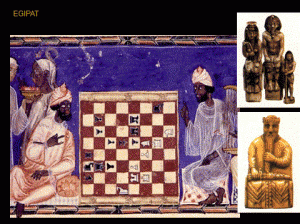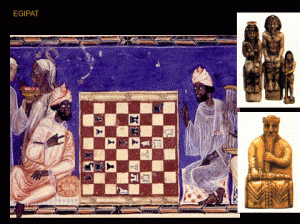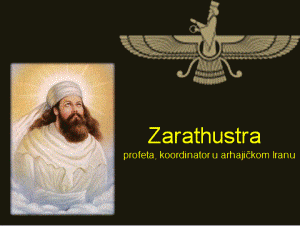Even if you are a fan of the ancient art of playing chess, you probably don't know how interesting history the queen had - the faithful shadow of the king and today the most powerful figure on the board. For starters, at first she wasn’t a woman at all!

There is no reliable data on when and where chess originated. It is most likely to have appeared more than 2,000 years ago. It is reliably known and proven that it existed in India 1,500 years ago during the reign of Gupta, and that it was called "chaturanga".

It was about the distant ancestor of chess, whose figures represented four branches of the then Indian army - infantry, cavalry, elephants and chariots, all of which protected the raja (king) and his advisor mantras who were in the middle.
It was this "advisor" who was the ancestor of today's chess queen, and that was the beginning of the interesting history that this figure had.
The game was accepted by the Persians in the 6th century and they called the queen "Firzan" - advisor / vizier. It was a rather weak figure who could move only one field diagonally and which serves as the last defense of the King.
Following this tradition, the Europeans called the figure "Fers", while the Russians still use the name "Ferz".
The king's vizier evolved over time into his wife. First, the word "Fers" became grammatically feminine in some European languages, and then those who were just beginning to play chess began to comment that the figure standing next to the king must represent the queen.
The history of this game is lost in the earliest times. It was already present in the tombs of the Egyptian Pharaohs, it was known to the Nordic cultures, there are artistic representations of its presence in various civilizations.

It is said that Rajah Balhait asked the wise Brahmin Sissa to invent some game in which the power of the mind would prevail, not happiness. More than that, he wanted this game to develop intellect and have educational valences. Sissa invented a game in which various pieces were to be moved on a square board with 64 squares, and, obviously, this was the forerunner of chess.
The word "CHESS" comes from the Persian "SHAH", which means King, it is assumed that the original term "ASHA" - Cosmic arrangement.
Legend has it that the life of the Persian King Vishtaspa became extremely boring, because he had already achieved everything he wanted: he was filled with feats in wars, he was fed up with hunting, and he was tired of intrigue and pleasure at his court. The king suffered from boredom and in the end promised an unlimited reward to anyone who would make him regain interest in life.

No one succeeded, until Zarathushtra appeared with the original chessboard, different from the one we know today. He taught the King the rules of the game and through it, he showed the King all the rules of the universe and life. He did it like no other, as no chess player today would be able to do, and the King was very pleased and, more than that, his interest in life was revived.
"The woman behind the character of the queen in chess"
By perfecting the ancient game of chaturanga, chess took on its present form over time. The biggest change happened during the 15th century, when the queen got a new way of moving and all the current "powers" that turned her into the strongest figure on the board.

The first printed work on chess in which these new rules were included was written by the Spanish chess player Lucena, and it was this nation that became the most deserving of the queen's character as we know it today.

Historian Marilyn Yalom in her book "Birth of the Chess Queen" presented today the most widely accepted thesis that the rise of the chess queen was connected with the rise of powerful medieval rulers in this part of Europe, such as Eleanor of Aquitaine and Isabel I of Castile.

A broad examination of the origins of chess and its most powerful work ... Marilyn Yalom shook Europe's vaults to shake off the missing link, a chess piece depicting the evolution of the game on the continent ... with the growing reputation of women in medieval Europe.

"Birth of the Chess Queen" is a history about chess in medieval Europe - it focuses on the status of queens both on and off the chessboard. It was not until the 15th century that the Chess Queen became the most powerful piece on the board. ... Fantastic history of the chess queen and the real women that inspired the piece.

The queen in chess and the power she has today in a way symbolize these two great European rulers, but also a number of co-rulers, regents and princesses who had enormous political power during the 15th and 16th centuries, especially at the courts in Spain, France and Portugal. .
The work of the chess player Lusen was published during the reign of Isabel I of Castile.









Amazing again. Couldn't believe the title at first. I love reading your articles girl